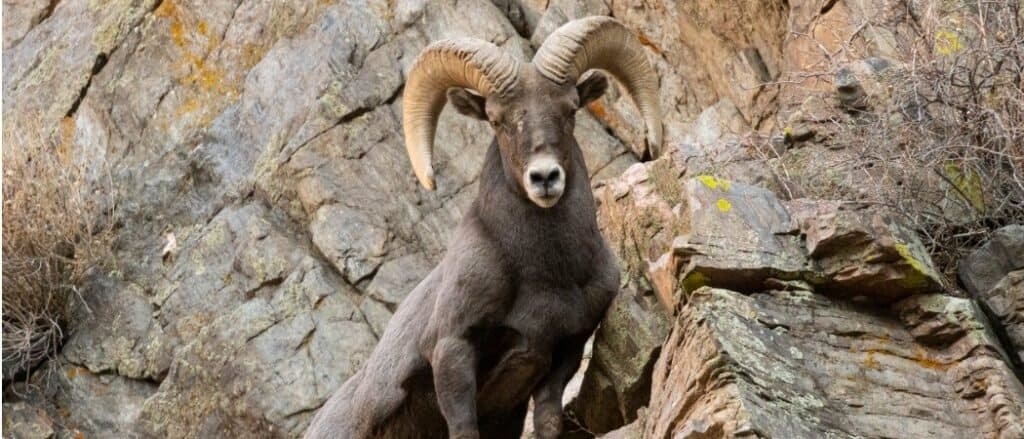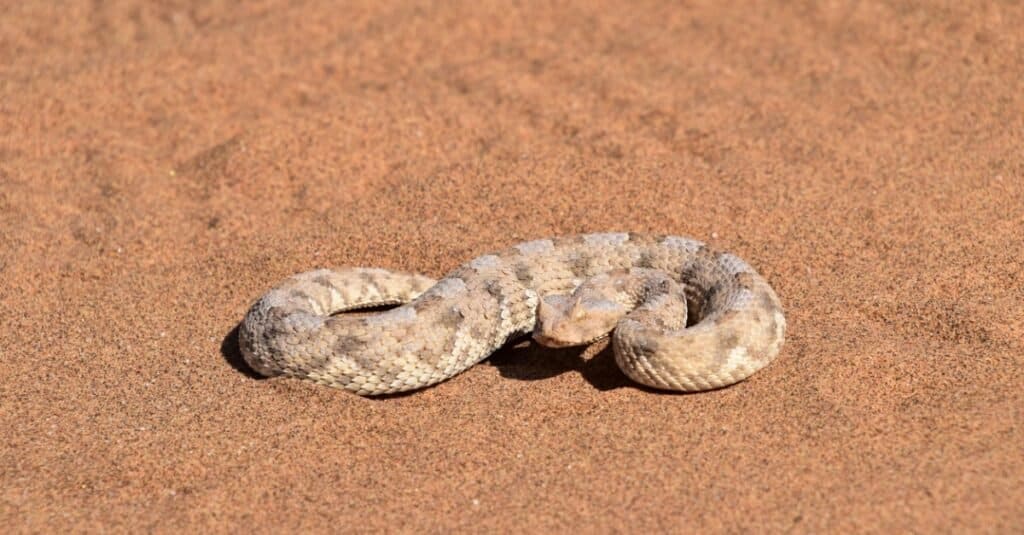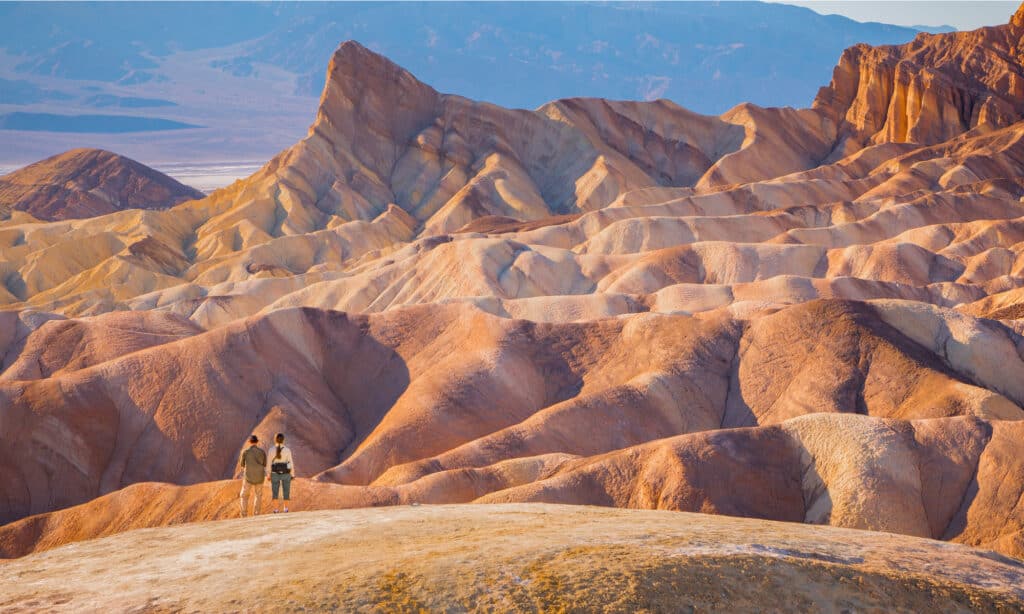Death Valley, one of the hottest and driest places on earth, is known for extremes. The people and animals that have inhabited the land over hundreds of years adapted to living in scorching temperatures with little water.
You may think of this valley as nothing but desert sand dunes, but Death Valley has a remarkably varying landscape, from snow-covered mountains and rugged canyons to wildflower meadows. Discover what lives at the bottom of Death Valley and why it is so dangerous.
What is Death Valley?
Death Valley is a desert in the Nothern Mojave Desert in Eastern California. It is one of the hottest places on earth during the summer and is comparable to the Sahara Desert. Badwater Basin, an area within the valley, is the lowest point of elevation in North America, at 282 feet below sea level. Fascinatingly enough, just 84 miles east is the highest point in the United States (Mount Whitney), with an elevation of 14,505 feet.
Death Valley has a subtropical, hot desert climate with extremely long summers and short, mild winters. The hottest temperature ever recorded was 134° Fahrenheit on July 10, 1913. The lowest recorded temperature was that same year in January at 15°.
Despite its overwhelming heat and lack of rainfall, Death Valley is home to considerable biodiversity. This sparse desert surprisingly features flowers, ponds, waterfalls, and creeks. Many animal species also thrive in this environment. But is there life at its lowest elevation?
What Lives at the Bottom of Death Valley?

Death Valley pupfish, aquatic insects, and Badwater
snails
live at the bottom of Death Valley.
©rawaccess/Shutterstock.com
Plants and animals like pickleweed, aquatic insects, and Badwater snails live at the bottom of Death Valley. Badwater Basin, the lowest point on the continent, is a small spring-fed pool in a drainage basin. It gets its name from the salts surrounding it, making it undrinkable. The salt flats adjacent to the basin have a thin crust of hexagonal-shaped crystallization. This area of the valley can be hazardous to traverse. There is no shade, and people can experience overheating and dehydration.
A rare desert fish called the Death Valley pupfish is endemic to this valley. You can find them in Salt Creek, which flows during the colder months, and Devil’s Hole, a water-filled cavern cut into the side of a hill. The pupfish is a small, silver-colored fish that can withstand harsh conditions that would kill other fish.
This species is endangered due to its highly restricted distribution. Their environment includes water that has four times more saline than the ocean and temperatures reaching up to 116° and down to 32°. Their numbers drastically fluctuate during the changing seasons and water levels, but they are threatened by the introduction of non-native species and local catastrophic events.
What Other Animals Live Around the Area?
Mountain Lion

Mountain Lions are
apex predators
in Death Valley.
The mountain lion is the apex predator of Death Valley. It usually inhabits the desert’s mountains but occasionally comes to the oasis. This big cat easily adapts to various environments and prefers to stalk its prey from rocks. While sightings happen, the chances of you coming into contact with one are meager.
Big Horn Sheep

Desert big horns have adapted to withstand harsh desert conditions, but their population is dwindling.
©iStock.com/SWKrullImaging
Desert big horns are often spotted throughout the valley, including ridges, canyons, and close to water sources. This species has adapted to the harsh conditions of the desert. They can survive months without water and have excellent eyesight to watch for predators. However, their numbers are dwindling due to humans interfering in their habitat. They are now on the endangered list.
Sidewinder Rattlesnake

The sidewinder is also known as the horned
rattlesnake
, and it is one of the most dangerous animals in Death Valley.
©iStock.com/Josh Mitchell
Your chances of seeing a rattlesnake are much higher than seeing a mountain lion in this desert. The sidewinder, or the horned rattlesnake, is one of the deadliest animals in Death Valley. They can traverse windblown sand by moving in a sideways motion, and they easily blend in with their surroundings. This highly venomous pit viper can easily take down its prey. Beware, its bite requires immediate medical attention.
Coyote

Coyotes
are bold and aggressive. Don’t go out in the desert at night; keep pets and children close.
©Jukka Jantunen/Shutterstock.com
While coyotes resemble domesticated dogs, they are not friendly. These wild dogs hunt in packs; you can find them in many areas of the valley, including the mountains, mesquite thickets, and salt flats. Coyotes are becoming more aggressive and bold in their search for food and are potentially dangerous to humans and pets. Don’t go out at night, especially by yourself.
Why is Death Valley So Dangerous?
There are many ways to die in this desert, but the most dangerous part of the valley may surprise you. Between 2010 and 2020, 41 people died in Death Valley. The most common cause of death is motor vehicle crashes. There are several stretches of highway that have an above-average of severe impacts. Officials believe the reason could be dangerous road conditions like unlit rural sections and lack of medians.
Millions of people visit the park yearly, and most leave with great stories to tell. However, it’s important to remember that Death Valley is not a theme park; it’s a desert, and mother nature can be violent.
You must stay in groups, don’t stray too far from the road, bring plenty of water, and stay out of canyon slots that can quickly fill with water. With temperatures reaching up to 120°, it’s easy to become dehydrated and exhausted very fast, especially without shade. While rare, people can still fall victim to heat stroke, falls from cliffs, and drownings during floods.
More Interesting Facts

Death Valley is a mysterious place. You can experience moving rocks, singing sand, and a 2,000-year-old crater.
©Dan Sedran/Shutterstock.com
- There is an 11,000-foot mountain only 15 miles from Badwater Basin. From the top of the peak to the bottom of the basin is twice the depth of the Grand Canyon.
- Death Valley comes alive in the spring. Under the right conditions, the valley explodes in colors of yellow, purple, and pink flowers.
- Rocks move on their own. Boulders up to 700 pounds can move 1500 feet on their own across the desert floor. Scientists believe it’s a mixture of water freezing overnight and wind pushing these rocks along the slippery ground.
- On top of the Eureka Sand Dunes, you can hear singing. Sand sliding down steep faces makes a low note similar to a pipe organ. Researchers aren’t entirely sure what makes the noise, but one theory is that it’s the friction of sand grains.
- Death Valley is a popular place to film movies and TV shows. You may be able to spot areas where scenes from Star Wars: A New Hope were shot.
- You can view an enormous crater from a volcanic explosion over 2,100 years ago.
The photo featured at the top of this post is © Katrina Brown/Shutterstock.com
Thank you for reading! Have some feedback for us? Contact the AZ Animals editorial team.






